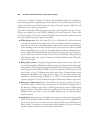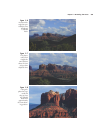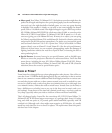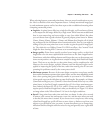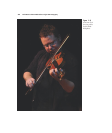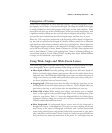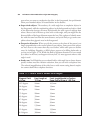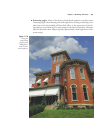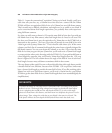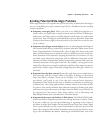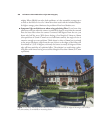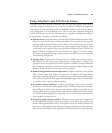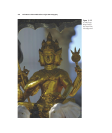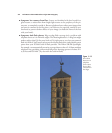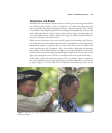
Table 11.1 turns the conventional “equivalent” listing on its head. Usually, you’ll see a
table that tells you that, say, a 100mm lens when used on a camera like the Nikon
D7000, will have an equivalent field of view of a 150mm lens on a full-frame camera.
That’s actually not a difficult calculation, and might not be as useful as you think. If
you’re concerned about focal length equivalents, you probably have some experience
using full-frame cameras.
So, what you really want to know is, if I want the same field-of-view that I got with my
old 20mm lens on my film camera, what focal length lens do I need to use now? The
fact that your 20mm lens is now the equivalent of a 30mm lens on the D7000 isn’t as
important as the question, “Do I own a lens that will provide the same field of view that
I used to get with my trusty 20mm lens?” That’s what the table shows you. In the center
column, you find a list of common focal lengths for prime lenses originally designed for
full-frame cameras. You can scan down the column to see that, if you want the same
field of view that you got with your 35mm lens, you’ll need to use a 23mm focal length
or zoom position when you’re shooting with the D7000. Or, if you preferred 85mm as
a focal length for portraits, that you’ll need a 56mm focal length when the 1.5X crop
factor is figured in. The left column shows the angle of the field of view of each lens’s
focal length, because many old-timers sometimes think in those terms.
The crop factor strikes again! You can see from this table that wide-angle lenses provide
a broader field of view, and that, because of the D7000’s 1.5X crop factor, lenses must
have a shorter focal length to provide the same field of view. If you like working with a
28mm lens with your full-frame camera, you’ll need a 19mm lens for your Nikon
D7000 to get the same field of view. (Some focal lengths have been rounded slightly for
simplification.)
David Busch’s Nikon D7000 Guide to Digital SLR Photography366
DOF IN DEPTH
The DOF advantage of wide-angle lenses is diminished when you enlarge your picture;
believe it or not, a wide-angle image enlarged and cropped to provide the same subject
size as a telephoto shot would have the same depth-of-field. Try it: take a wide-angle
photo of a friend from a fair distance, and then zoom in to duplicate the picture in a tele-
photo image. Then, enlarge the wide shot so your friend is the same size in both. The
wide photo will have the same depth-of-field (and will have much less detail, too).



